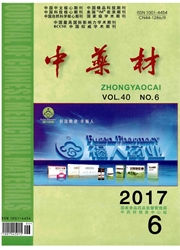

 中文摘要:
中文摘要:
以烟酸(NA)为模板分子、4-乙烯基吡啶(4-VP)为功能单体、二甲基丙烯酸乙二醇酯(EGDMA)为交联剂、偶氮二异丁腈(AIBN)为引发剂,分别采用本体聚合法和溶胀聚合法制备了分子印迹聚合物MIP1及MIP2。静态平衡结合实验表明,MIP1、MIP2对NA的结合量Q分别为193.56、215.35μmol/g,均大于其相应的空白聚合物NIP1、NIP2;溶胀聚合法制备的MIP2对NA的印迹效果更显著。MIP1、MIP2对模板分子NA的结构类似物烟酰胺的吸附能力最强,其次为苯甲酸,苯甲醇与3-吡啶甲醇较弱。研究结果表明MIP与底物发生识别时,不仅底物的空间结构与MIP印迹孔穴匹配,而且能与印迹位点发生氢键、静电、π-π等相互作用。
 英文摘要:
英文摘要:
Molecularly imprinted polymers (MIPs) were synthesized by bulk polymerization and swelling polymerization using nicotinic acid (NA) as the imprinted molecule, 4-vinylpyridine(4-VP) as the functional monomer and ethyleneglycol dimethacrylate (EGDMA)as the cross-linker, initiated thermally with azobisisobutyronitrile (AIBN). The binding and selectivity of MIPs to NA and different substrates were evaluated by the static batch method. The adsorption amounts of MIP1 and MIP2 were 193.56 μmol/g and 215.35 μmol/g, respectively, which were obviously higher than those of their corresponding non-imprinted polymers, NIP1 and NIP2. The adsorption capacity of niacinamide on MIPs was the largest, followed by benzoic acid, benzyl alcohol and 3-pyridine methanol. The results indciated that the stereostmcture of the substrate and the interactions between substrate and imprinting bites influenced the recognition property of MIPs.
 同期刊论文项目
同期刊论文项目
 同项目期刊论文
同项目期刊论文
 期刊信息
期刊信息
